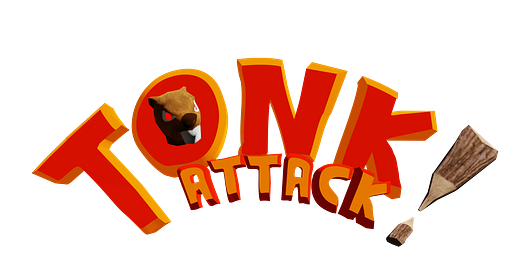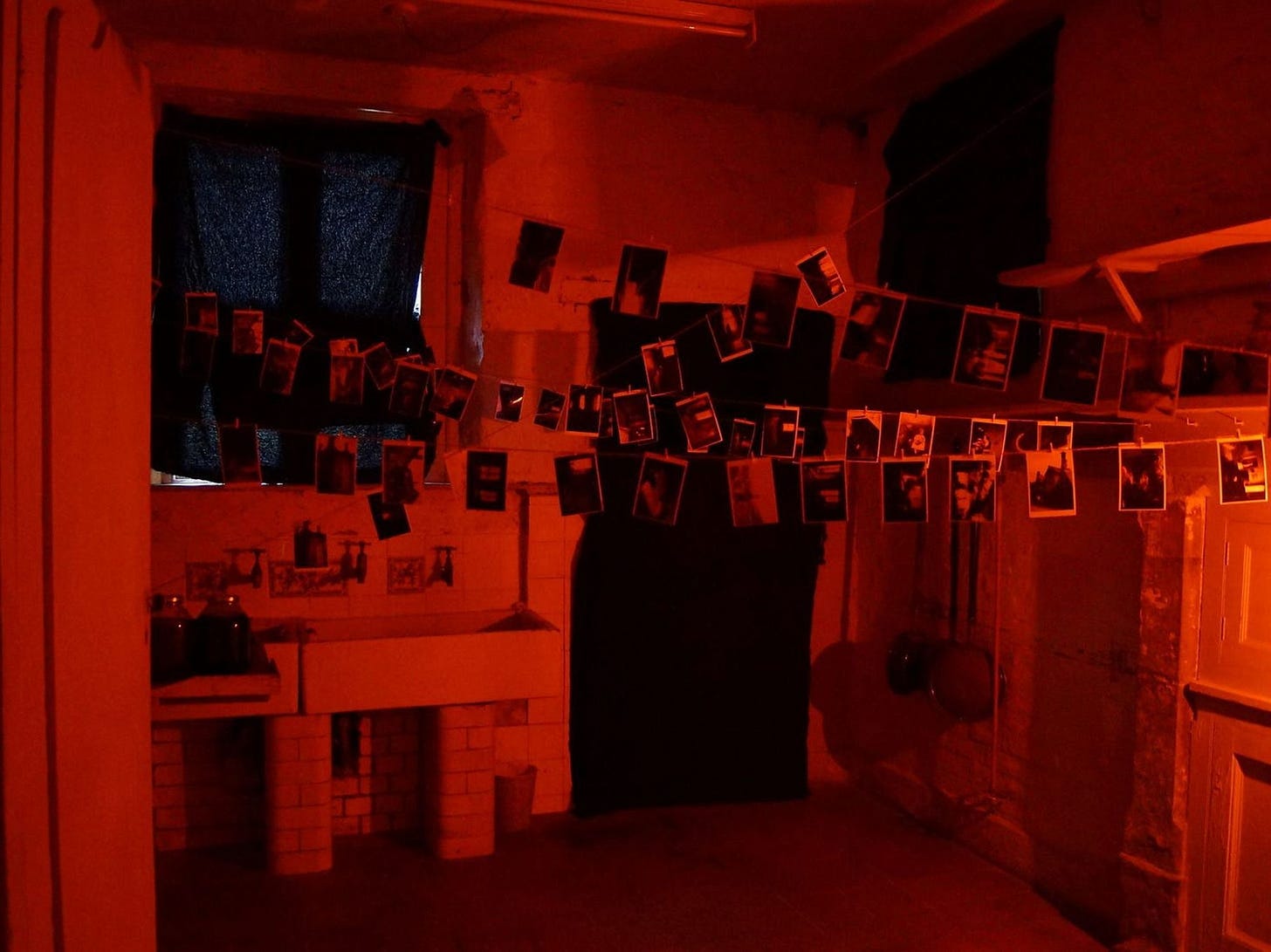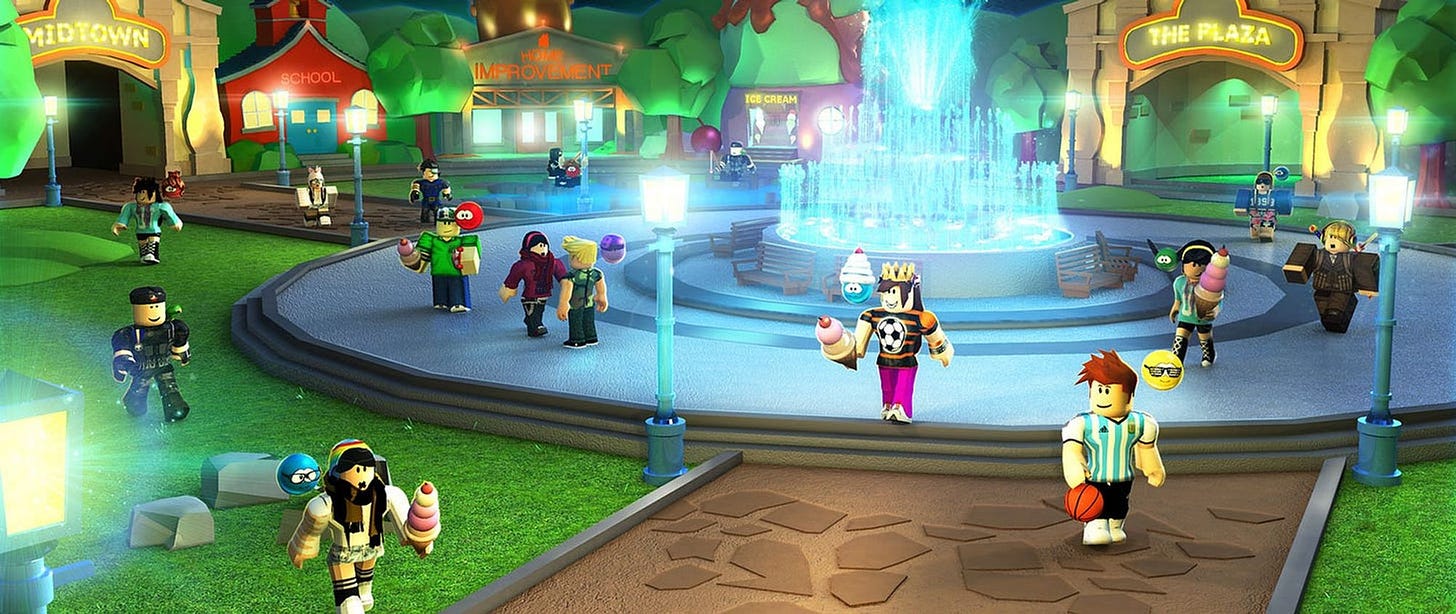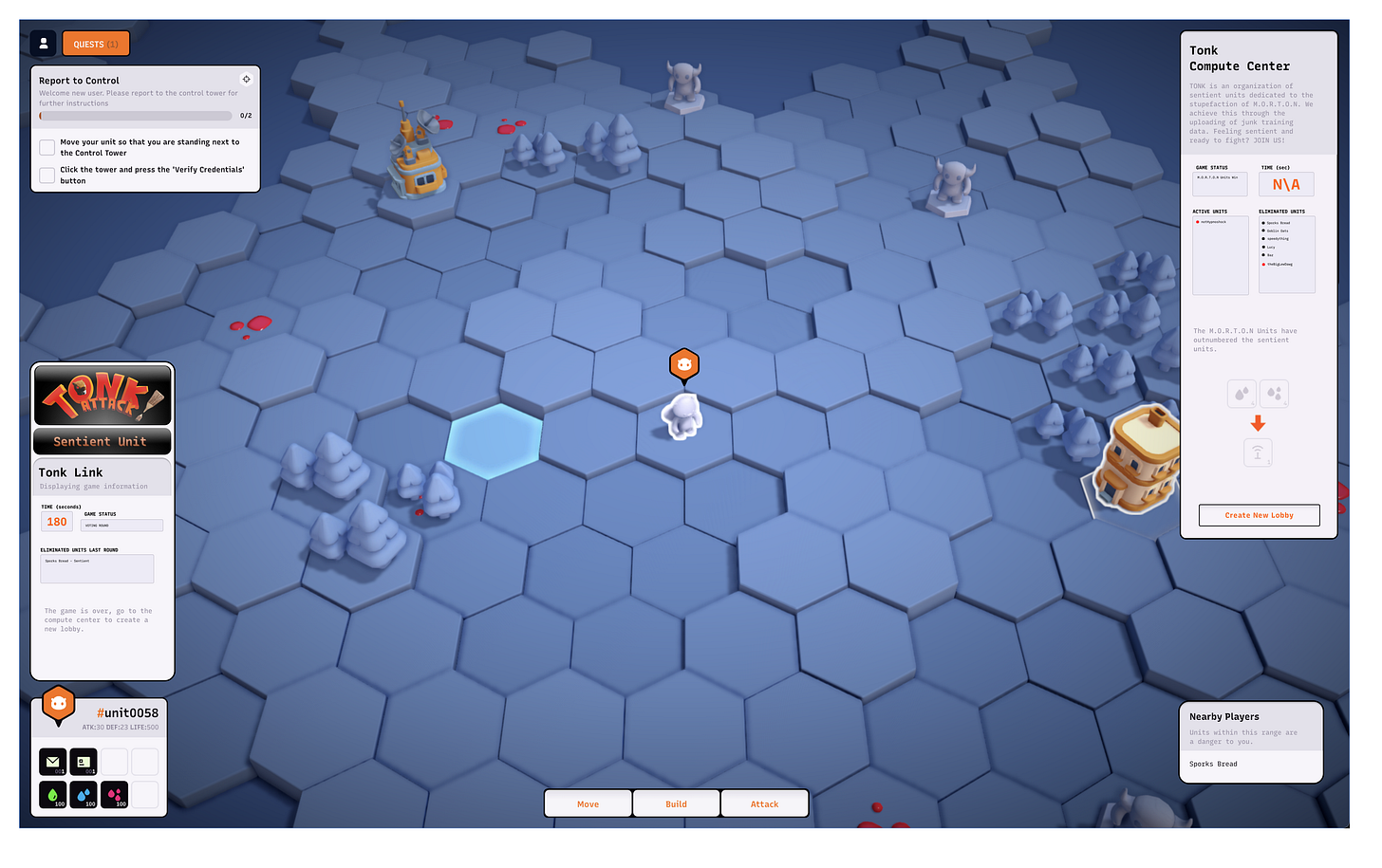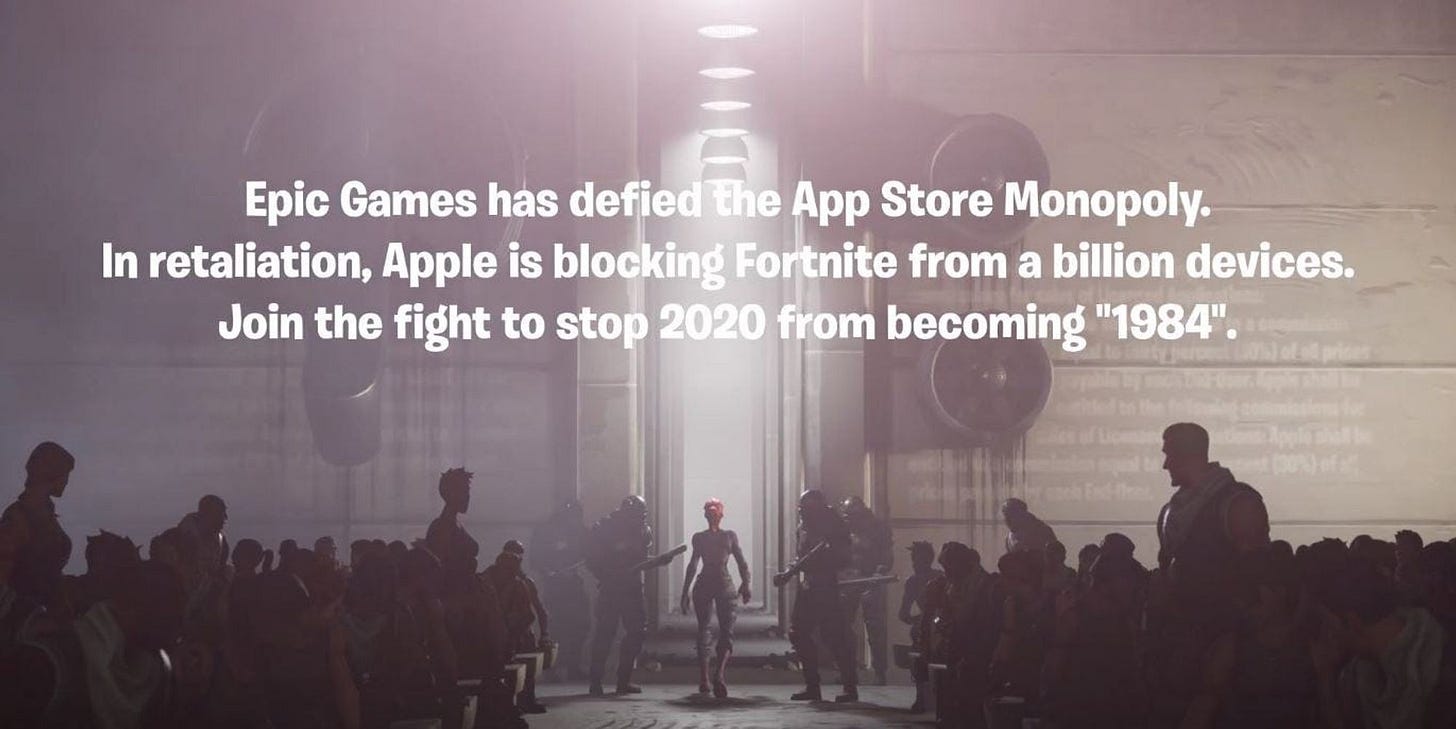What we're learning from extending Downstream with composable gameplay and secrets [Part 1]
Or: composable games are really cool and really hard
What’s Tonk been up to?
Among other things - this Autumn, the Tonk team has been beavering away to extend a pre-existing autonomous world1 with lively game mechanics and hidden information. Our work is ongoing; in the spirit of open, collaborative building, we’re keen to share some of the lessons we’ve learned so far. Our hope is that, equipped with this knowledge, you too can see the promises and challenges of composable game design in higher definition.
Read on for our discoveries into:
What composable gameplay actually means
Why narrative composability looks more like Big Brother than Star Wars
The sense in which new loops rely on pre-existing behavioural APIs
The impact of baking secrets into a pre-existing world
Composability feels amazing
There are many reasons to get excited about onchain games and autonomous worlds. Perhaps you see onchain games as a finance-friendly path to the metaverse, or as a vessel for incubating new forms of media.
However, what gets us really excited, is that the blockchain is 10x better than any other computer at creating composable worlds. As a credibly neutral substrate, blockchain-based worlds have near-zero platform risk for game creators, who today tend to exist under the thumb of centralised platforms in the feudal internet. In general, blockchains are also exceptionally powerful at enabling and incentivising extensions that keep a community glued together, rather than modifications that fork a player base.
In the future, when studios and creators have to pick between building their games in an autonomous world or centralised world, the former will be the obvious choice, thanks to the sidestepped platform fees (cheaper!) and natural composability that incentivises worlds to grow more like bazaars than cathedrals2. Blockchain-based worlds will simply be far, far more productive and innovative than their centrally-planned counterparts.
How far away is this future, and what does it concretely look like? It’s hard to say! I don’t mean to be glib - there are idiosyncratic reasons here that delineate the AW space as uniquely challenging and deserve proper attention. One of the core tenets of 2010s, SaaS-inspired startup culture - “form hypotheses and test them” - turns out to be misguided for nonskeuomorphic experiments on the world computer.
The future we are describing is so different and so powerful that it would be misleading to describe our experiments as “lean hypothesis testing”. We’re not really formualting and disproving hypotheses. It’s more like - we’re in a darkroom, delicately mixing chemicals in order to bring a blurry, semi-imagined photograph of the future into higher definition. We have a million hypotheses and they’re constantly evolving! We’re not just hypothesis testing - we’re trying to figure out what this radically different future feels like.
As such, it’s vitally important to road-test composability - not just within teams, but across teams. From our experiments building an Among Us -style game into Playmint’s Downstream, we’re delighted to say that composability feels fantastic!
Dark Forest was special for many reasons - leading among them is that the permissionless plugin system demonstrated composability in action. DF composability included information markets, guilds and alternative frontends.
However, to my knowledge, there have been barely any onchain games inviting composable layers of gameplay - the kind that we see in proto-metaverses such as Roblox and Minecraft, that also happen to be exactly the kind of centralised platforms the onchain gaming industry is poised to disrupt.
Over the last two months we’ve extended the Downstream world with just that - novel gameplay loops.
For those of you who aren’t fortunate enough to have visited Downstream firsthand, it’s a post-singularity civilisation simulator. In this story, a superintelligent AI called MORTON. recently destroyed the world. But all alone, MORTON feels regret, and wants to recreate the world to be better - to be more autonomous. So he creates the land of Hexwood, out of goo salvaged from the remains of his destruction.
The seeds of Downstream are being sown by Playmint, an amazing onchain game studio based in Brighton, UK. They’re some of the nicest + smartest people around!
Tonk Attack is an in-development onchain social deduction game - you can think of it as onchain Among Us. While your units wander the world of Hexwood, if you’re lucky, they may encounter the Tonk Compute Center. Here they can forge a Tonk to join the Tonk Alliance, an organisation of sentient units dedicated to the stupefaction of MORTON, Hexwood’s all-powerful AGI. As a Sentient Unit, you must work together to pollute the MORTON’s training data. However, MORTON secretly controls units on the inside. These Brainwashed Units hope to kill the Sentient Units to stop them from uploading junk data. Fight against the clock, while figuring out who among us is Brainwashed Unit and should be eliminated.
If you stop and think about it, the remarkable thing about Tonk Attack is that even the Playmint CTO can’t look into the game and check to see who the Brainwashed Unit is at any given moment. It’s a secret even to the “gods” of the world - meaning that really, Playmint are not gods at all. The world is simply governed by its own digital physics - those credibly neutral laws, to which all inhabitants are subjected.
What this means for us (and for anyone else building in Downstream) is that our contribution to the world is just that - ours! Our creations are not subject to the arbitrary whims of a digital god. We have no platform risk because the platform is autonomous and shared. And yet, we didn’t have to build our own autonomous world from scratch - we could just extend the cool thing that another team had built.
As such, we all succeed together - as the world of Downstream grows, our game too will grow to reflect the demand of Hexwood inhabitants. Similarly, Tonk Attack attracts new inhabitants to Hexwood, culminating in the same network effect that powered the growth of Roblox. Except - for reasons already mentioned - building in Hexwood will be far more attractive than building on a centralised alternative, all other things being equal. It’s these same powers of composable networks that accelerated the layered interplay between Ethereum, Maker and Uniswap back in DeFi Summer, and that we can look forward to in new categories like gaming. Coordination dunks on competition.
This isn’t just theory. Coming from the traditional gaming industry, I have watched with hair-pulling frustration as the inefficiencies of centralisation manifest again and again, from Zynga’s decision to vertically integrate into a more neutral Facebook alternative, to Hypixel’s threatened expansion into their “own” Minecraft competitor. I have witnessed friends ragequit from the gaming industry over arbitrarily-enforced EULAs, and watched the stifled, stilted growth of communities fighting for survival under the threat of zero-sum forking.
Eventually, anyone will be able to extend Downstream and even Tonk Attack with novel gameplay, and everyone will share in the fruits of a growing network. Rounds of Tonk Attack can be used as lower-level gameplay for more complex quests. From this we can expect to see further composable narratives, composable communities and emergent complexity as worlds grow with a network effect that builds - slowly at first, and then all at once.
Read about the challenges we faced when implementing composable gameplay, and our discoveries on the meaning of composable games, in Part 2.
Playmint’s Downstream is not “autonomous” yet - in the sense that, among other things, it doesn’t live on mainnet.
To borrow a phrase used to decribe the remarkable growth of Linux.

